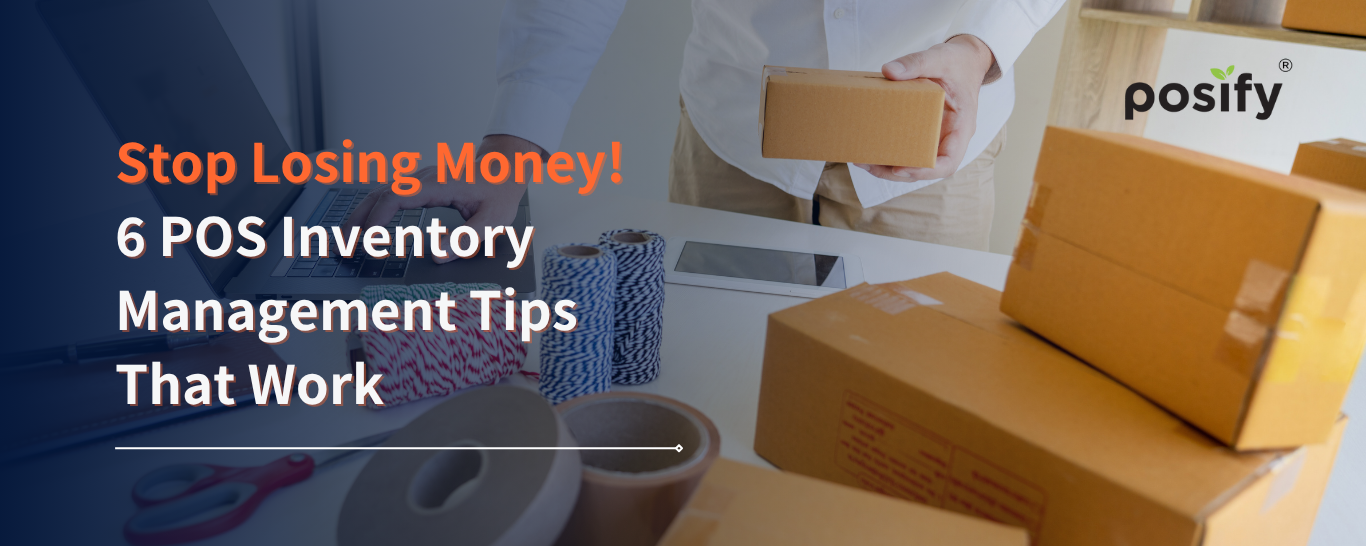In the retail world, managing inventory without real-time updates is like navigating with an outdated map—you’re going the wrong way and don’t even know it. Regardless of whether you sell stationery, clothing, food, or electronics, delayed or inaccurate inventory data can mislead your restocking, promotional, or transfer decisions, leading to operational inefficiencies and customer dissatisfaction.
Traditional inventory tracking often relies on manual input of sales and stock movement data. This method is time-consuming, inefficient, and highly prone to human error—such as double entries, omissions, or incorrect adjustments. While these mistakes might seem minor at first, they accumulate over time and can result in significant discrepancies during audits, reporting, or customer inquiries.
A modern POS system solves this issue by ensuring automatic inventory updates with every sale, return, or transfer. The system instantly adjusts stock levels the moment a transaction is completed, eliminating the need for manual entry. This not only reduces the chances of error but also provides a reliable foundation for reporting, forecasting, and procurement decisions.
To further streamline accuracy, many retailers integrate barcode scanning and mobile inventory tools. These allow employees to quickly process stock-in or stock-out actions using scanners or mobile devices, minimizing manual mistakes and speeding up workflows—especially valuable during high-traffic periods or seasonal sales.
For multi-store or omnichannel retailers, real-time inventory syncing across all locations is critical. You no longer have to call each store to ask, “Do you have this item in stock?”—the POS system consolidates inventory data across locations into a centralized dashboard, allowing you to manage transfers or replenishment instantly and intelligently.
In short, evolving from manual input to automated, real-time inventory tracking is the foundational step toward higher accuracy and operational efficiency. It’s the bedrock of every successful inventory strategy.
Tip 2: Enable Batch and Serial Number Tracking for Easy Product Traceability
In retail—especially when selling high-value, warranty-backed, or perishable products such as electronics, cosmetics, food, or pharmaceuticals—product traceability becomes crucial. If quality issues, customer disputes, or product recalls arise, being unable to trace individual items can cause serious reputational and financial damage.
This is where batch and serial number tracking in your POS system becomes a game-changer.
With batch tracking, you can log key information such as supplier, purchase date, quantity, and expiration date. For example, two shipments of the same facial mask might look identical but have different expiry dates. Without batch tracking, staff may accidentally sell items nearing expiration. With batch data in your POS, you can sell products using a first-expire-first-out (FEFO) strategy, reducing waste and financial loss.
For products with warranties or unique identifiers—such as smartphones, home appliances, or luxury watches—serial number tracking is essential. Each unit carries a unique identifier (e.g., IMEI, serial barcode). Your POS system can track when and from whom the item was purchased, warranty validity, and return history. This enables staff to answer customer inquiries or service requests with speed and confidence, building customer trust.
Additionally, if a product batch needs to be recalled, your POS can instantly identify all affected products and customers, allowing you to notify buyers quickly and handle the situation proactively. This protects your business from legal or reputational harm and aligns with modern consumer protection expectations.
In summary, batch and serial tracking isn’t just about inventory—it’s about accountability, risk management, and customer service. Whether you're running a large retail chain or a boutique shop, enabling this functionality is a strong step toward building a reliable and transparent retail operation.
Tip 3: Activate Slow-Moving Stock to Improve Inventory Turnover
or retailers, slow-moving stock is often more frustrating than bestsellers. These items sit idle in storage, taking up valuable space, tying up cash flow, and slowing down operations. If left unattended, they may expire, go out of season, or lose value—eventually becoming losses rather than assets.
But here’s the good news: with the right strategy, you can revive and monetize your slow-moving inventory. And your POS system can help you do just that.
Start by using your POS system’s inventory turnover reports to identify products with low or stagnant sales activity. These are your slow movers. With that insight, you can apply different tactics to accelerate their movement:
-
Bundling: Package slow items with popular ones to boost volume sales
-
Discount promotions: Create time-limited offers, BOGO deals, or add-on pricing to make them more appealing
-
Rebranding or repositioning: Refresh the display, change product descriptions, or target a new audience segment
-
Online exposure: List the slow movers on e-commerce platforms to reach a broader customer base
Moreover, your POS system can help track the effectiveness of these promotions, giving you actionable data on which strategies actually work—and which items may not be worth restocking in the future. This helps refine your procurement process and reduce repeat mistakes.
Ultimately, reclaiming value from slow inventory is not just about clearing space—it’s about improving your overall inventory health and financial agility. When you use your POS tools to analyze, act, and adapt, you transform dead stock into a sales opportunity—and that’s the kind of smart retailing that drives long-term success.
Tip 4: Fast Stocktaking and Exception Alerts to Keep Inventory Accurate
In retail operations, there’s often a gap between “on-paper” inventory and actual stock on the shelf. This discrepancy is one of the biggest sources of inventory issues. For example, your POS system might show stock available, but in reality, it’s already sold out. Or during stocktaking, you may find items missing or in excess—with no clear explanation. If left unchecked, these discrepancies lead to restocking mistakes and inaccurate business reports, which ultimately hurt decision-making.
That’s why fast stocktaking and exception alerts are essential features in any modern POS system.
Many POS platforms today support mobile stocktaking, allowing staff to use smartphones or tablets with barcode scanners to quickly verify physical stock against system data. This eliminates manual counting with paper and spreadsheets, drastically increasing efficiency and reducing errors. Some systems also support cycle counting, allowing you to conduct partial, scheduled stock checks without closing the store or disrupting operations.
On top of that, inventory exception alerts can notify you of irregular stock activity—such as sales and stock movement not matching, sudden stock level changes, excessive returns, or product shrinkage. These alerts help you proactively detect operational errors, supplier issues, or even internal theft.
For example, if a specific SKU hasn’t had any recorded sales in several days, but the stock continues to decline, it may indicate unscanned transactions or theft. By acting on such alerts, managers can investigate and correct issues promptly—before they spiral into major losses.
Ultimately, the goal is not just to “get inventory right once,” but to build a culture of ongoing accuracy and real-time monitoring. When you have reliable inventory data, every other decision—from purchasing and promotions to logistics and budgeting—becomes more strategic, less risky, and far more effective.
Tip 5: Synchronize Multi-Store and Omnichannel Inventory for Smarter Allocation
As retailers expand into multiple locations—or operate both physical stores and online channels—inventory management becomes significantly more complex. If each store manages its inventory in isolation, or if online and offline channels use separate systems, it often leads to stock imbalances, missed opportunities, and a disjointed customer experience.
This is where multi-location inventory synchronization via a POS system becomes crucial. A good POS platform consolidates inventory data across all your outlets, allowing you to view real-time stock levels from anywhere. If one store is running low, you can transfer items from another nearby location instantly—without waiting for a full stockout—thus increasing efficiency and preserving customer satisfaction.
For omnichannel retailers, inventory consistency between online and offline platforms is even more vital. If your online store shows stock availability but the product is actually sold out, you risk order cancellations and negative reviews. On the other hand, if inventory isn’t listed online, you’re missing potential sales. By integrating online, in-store, and warehouse stock in one system, POS ensures data consistency, reducing errors and protecting your brand’s reputation.
Advanced POS systems also support cross-store ordering and fulfillment. For instance, a customer could order an item from Store A, pick it up at Store B, or receive it via direct warehouse delivery. This not only improves flexibility but also enables smarter use of inventory across all sales channels—lessening pressure on any single location.
Centralized, real-time inventory data also allows better analysis of store performance, helping you fine-tune restocking frequency and transfer strategies. In short, inventory is no longer a store-by-store challenge—it’s a company-wide asset. With the right POS system, you can make smarter decisions, reduce waste, improve turnover, and deliver a more unified and seamless customer experience.
Tip 6: Use Sales Data Analytics to Accurately Predict Restocking Needs
Many retailers still rely on gut feeling or past experience when placing inventory orders. However, in today’s competitive and fast-moving market, this method is often inaccurate and risky. It can easily lead to overstocking on low-demand items or missing out on top-selling products—resulting in higher costs or lost revenue opportunities.
With a POS system that collects and consolidates sales data, retailers can systematically analyze product performance trends and sales cycles. For example: Which items spike during certain months or holidays? Which SKUs consistently sell well? Which products are underperforming from day one? This data allows you to understand each item’s lifecycle and restocking rhythm more clearly.
A POS system with reporting and trend analysis features helps you set reorder points and optimal inventory levels based on actual sales data, not assumptions. You can even tailor restocking strategies for different store locations, replacing guesswork with smart, data-driven decisions.
Advanced POS systems take this even further by offering AI-powered restock suggestions or forecasting demand trends based on historical data and seasonal patterns. When you can anticipate a surge in demand ahead of time, you gain a valuable edge—preparing stock early and maintaining a smooth supply chain.
Equally valuable is the insight this data offers for marketing planning. If reports show an item is entering a low-demand phase, you can plan targeted promotions to move the inventory before it becomes dead stock, improving turnover and cash flow.
In short, sales data isn’t just a record—it’s your strongest forecasting tool. By leveraging POS analytics, you move from reactive restocking to proactive inventory planning, gaining tighter control over your stock, reducing unnecessary costs, and increasing profitability.







